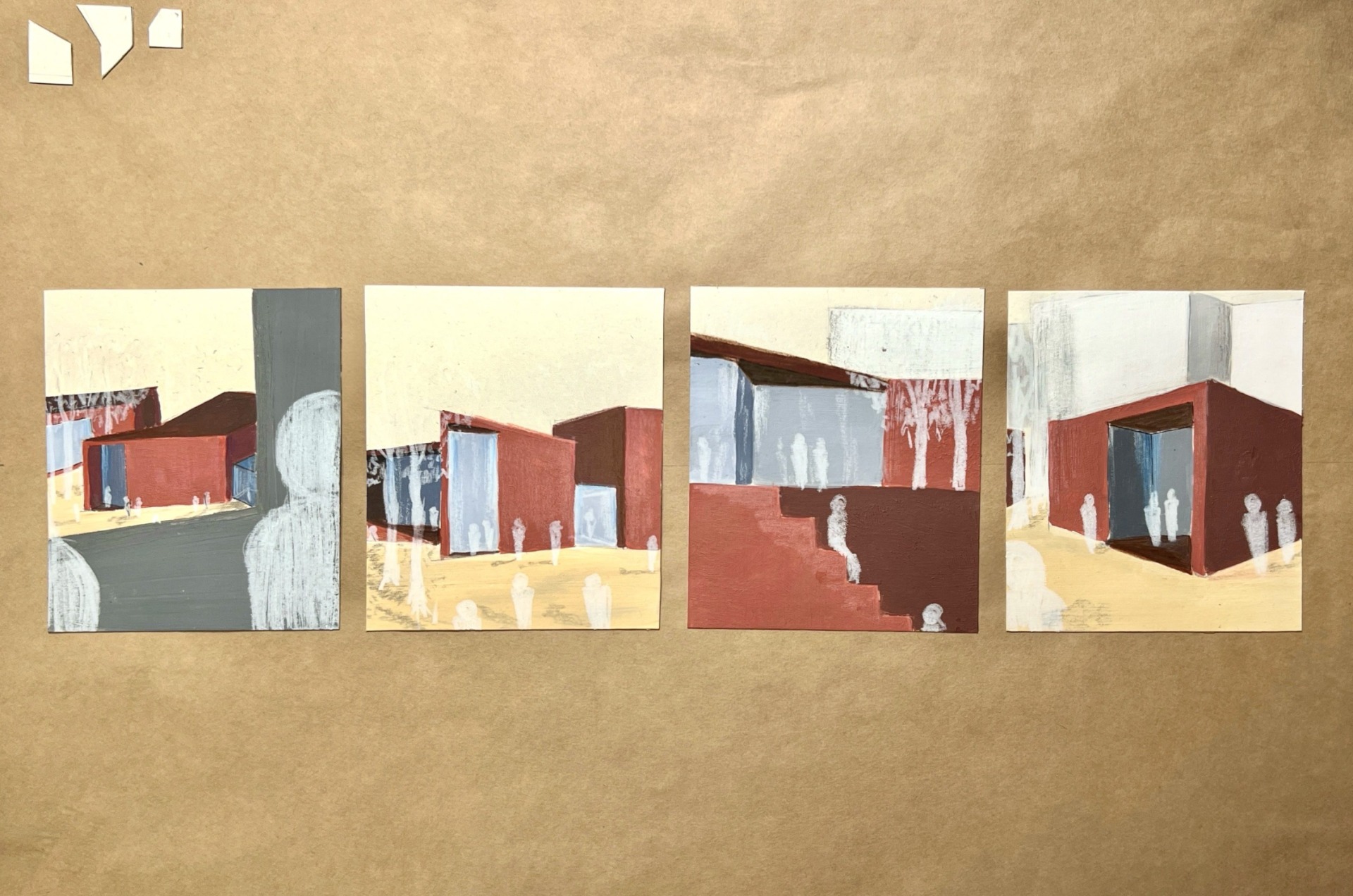Salmon
The main idea of the project is to create a place for students of the Department of Architecture, which will function as a great space. The space is to be freely created according to needs. The project has been divided into three different buildings, which create a large space for any interpretation interpretation. The project aims not only to create a space, but also to support the interaction of the academic community through a dynamic and functional structure. It is a place that not only meets current needs, but also anticipates the evolution of needs and technology in the future. The entire will change as demand and development occur. The main decisions about the function of the space will be be made by its participants, as the project is designed with them in mind.
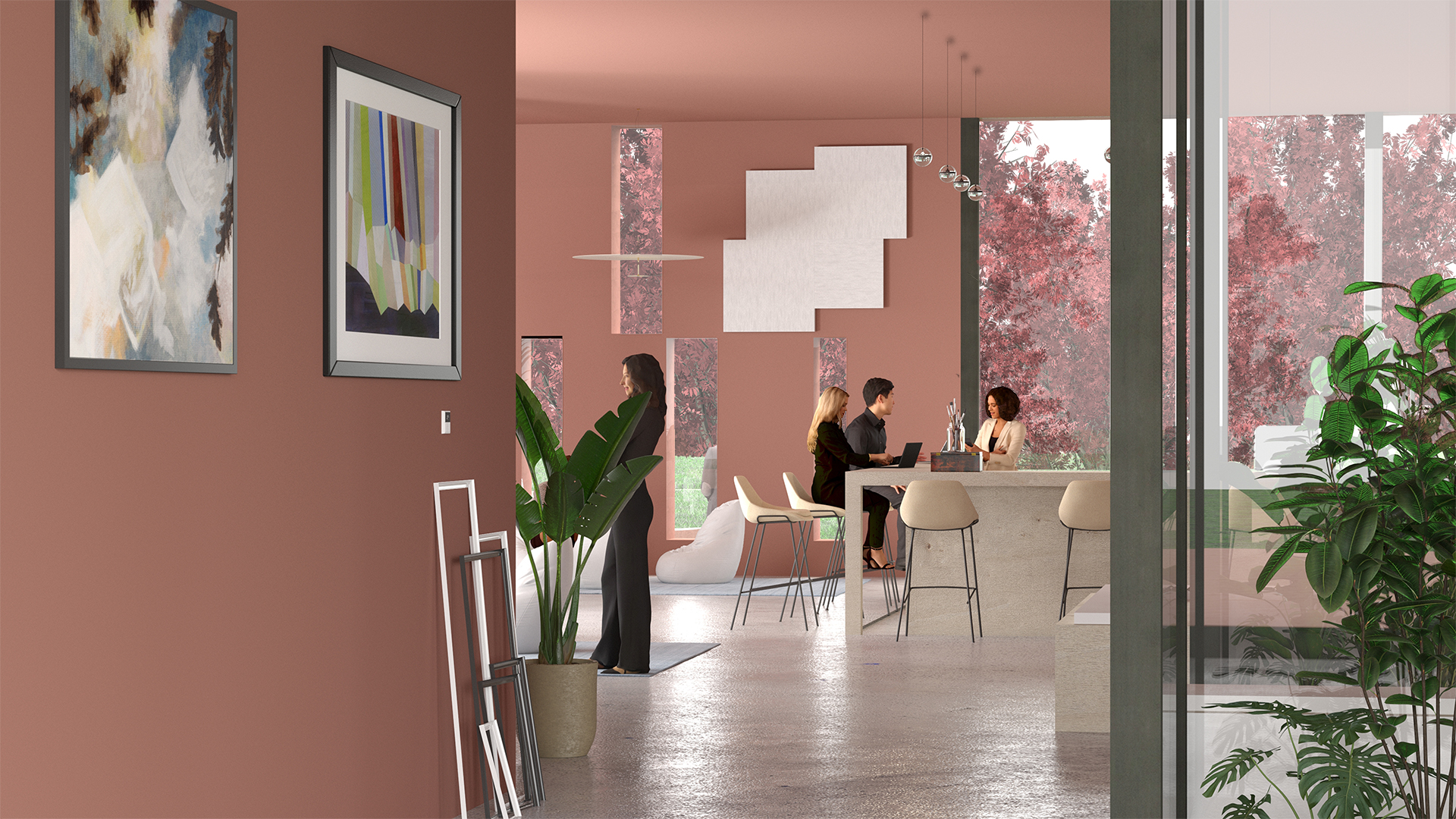
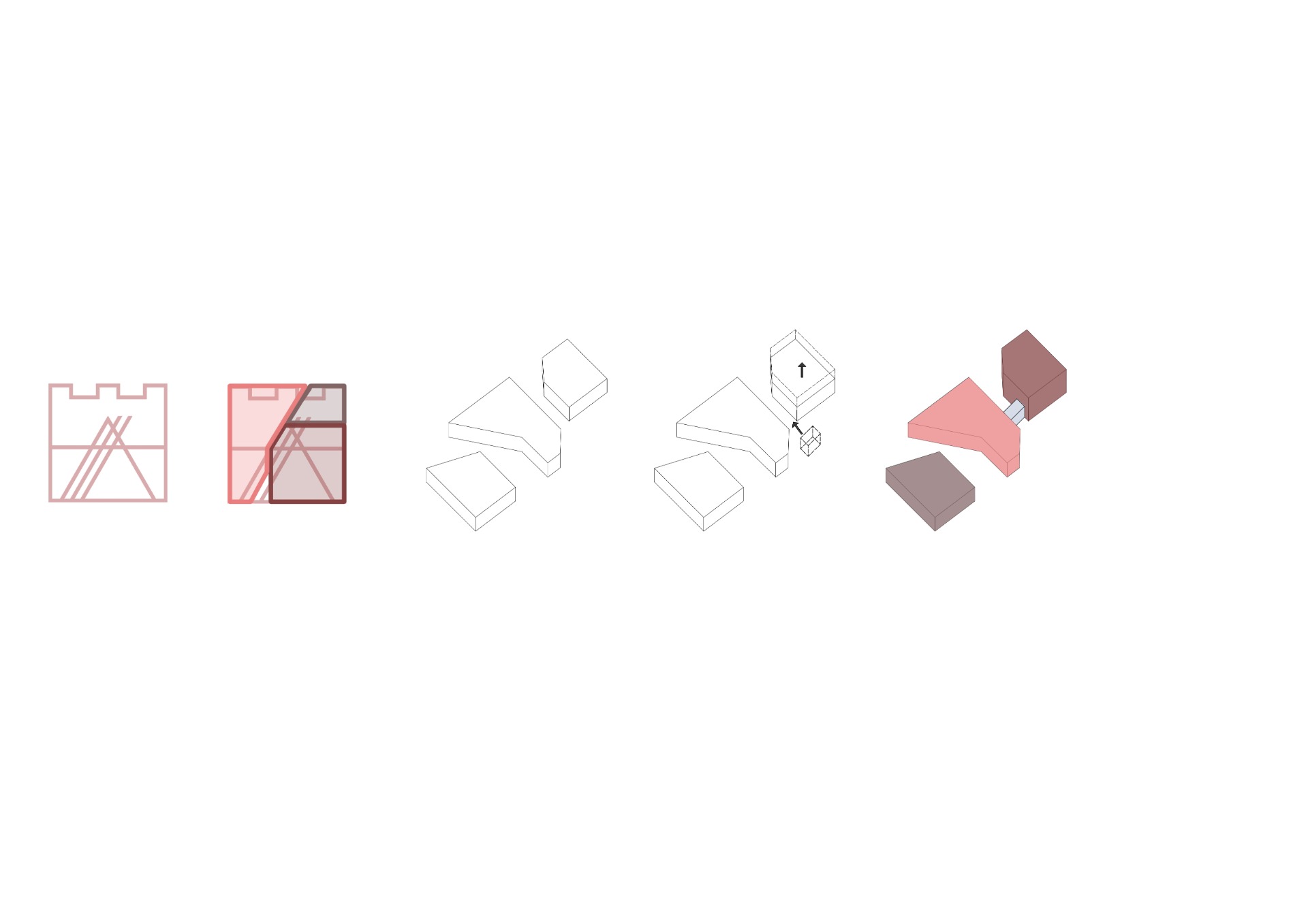
The idea for the appearance of the building came from the architecture department itself, or more precisely, its sign. If the design is to be created for the students of the architecture department, it must be strongly related to it and create a hidden thought. It is also supposed to teach students that it is possible to get an idea from everything and that it is worth creating a hidden meaning of the design. This exercises creativity and allows them to create interesting and unique designs. The sign of the architecture department was divided into three parts, by choosing interesting directions on it. In this way, three solids were created which, properly arranged, give the faculty sign and refer to the place in a mysterious way, so that the message of the design is not obvious. The hidden thought is to make the viewer delve into the project and get to know it from all sides.
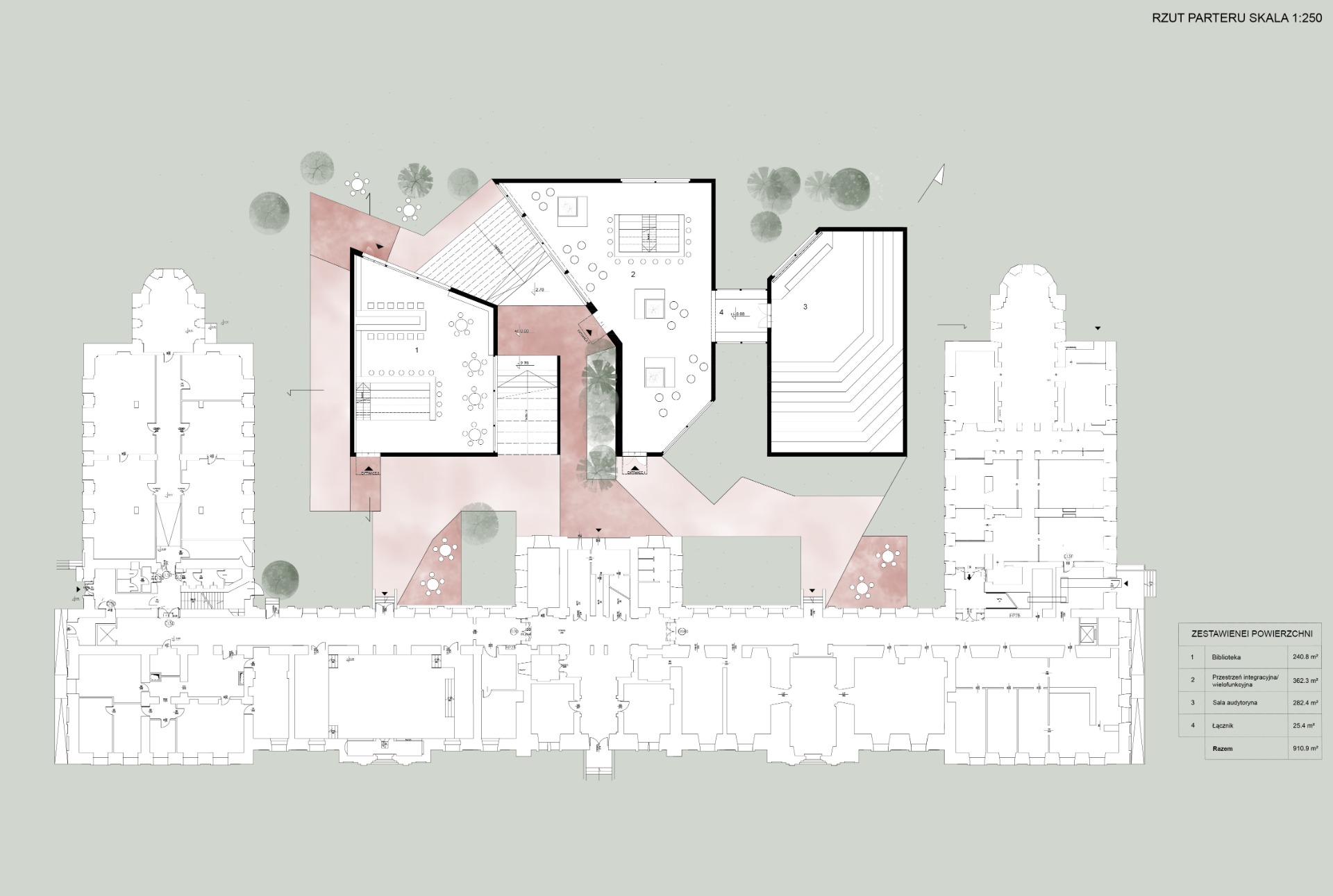
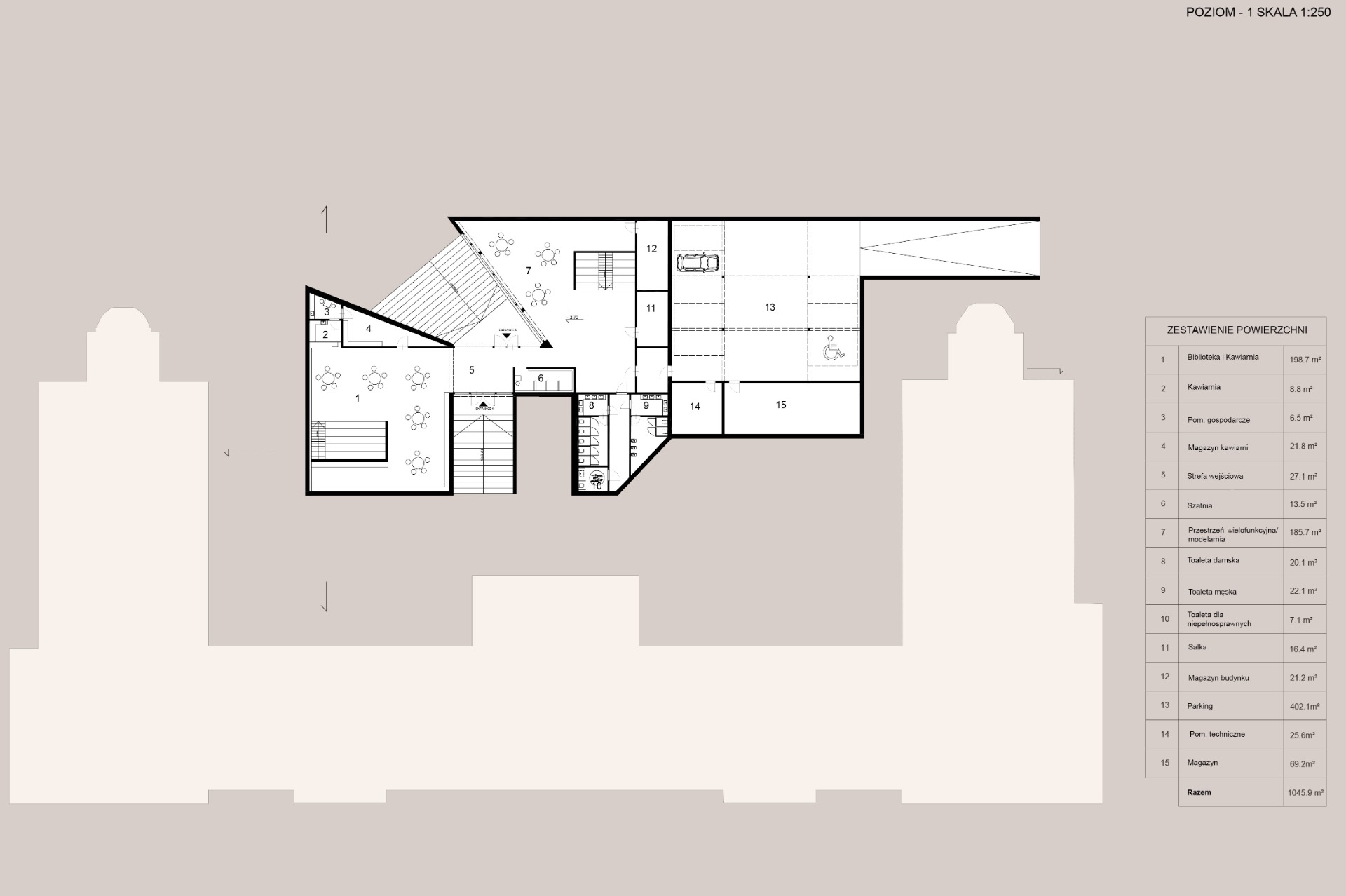
Color has a powerful effect on an individual's psychological, emotional and cognitive responses. The color salmon is often associated with positive emotions such as joy, optimism and creativity. Psychological color research suggests that salmon, as a shade of warm pink, can stimulate mental creative processes and boost intellectual activity. The impact is due to a combination of the color's warm tone, which can evoke feelings of comfort and pleasure, and softness, which is not overwhelming but promotes focus. For architecture students, the environment of a salmon-colored building can support the process of creative thinking and innovation. The use of this color can evoke positive emotions, reduce stress and promote the ability to concentrate, which is crucial when working on architectural projects. Scientifically, the salmon color can influence the secretion of neurotransmitters such as endorphins and serotonin, which can help improve mood and increase energy, which in turn promotes intellectual activity. Its subtlety also helps ensure visual harmony, which can be key to an environment conducive to creativity and student productivity. Hence, the use of the salmon color in educational architecture can be a strategic move, emphasizing an environment conducive to mental activity, imagination and creativity, and benefiting the overall well-being and engagement of students.
